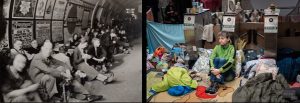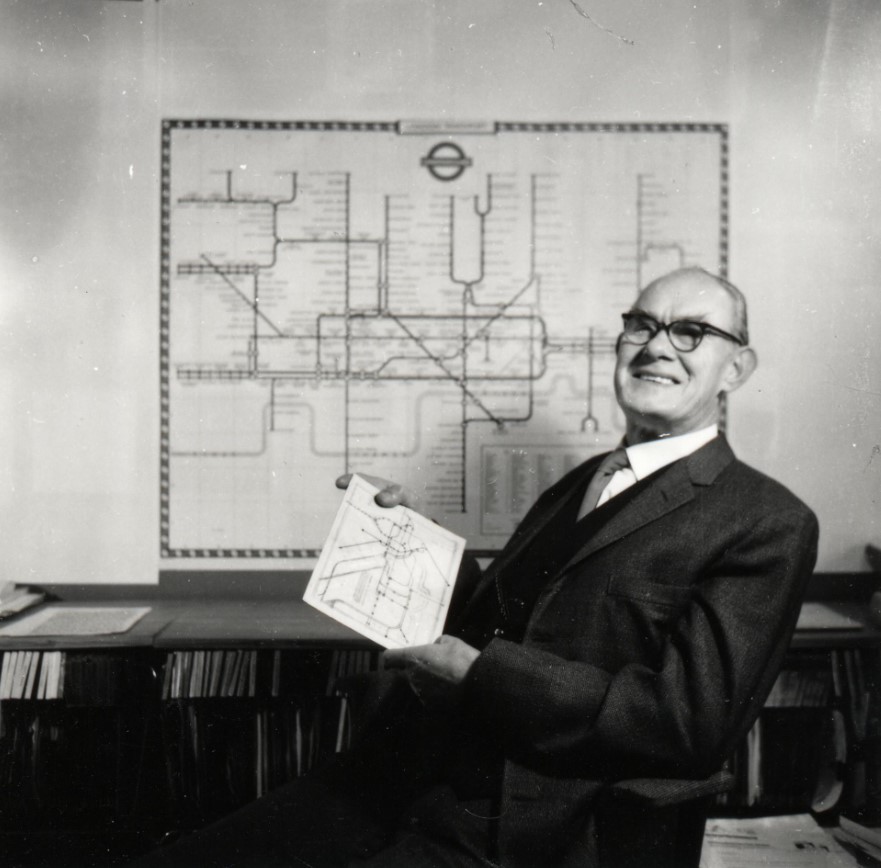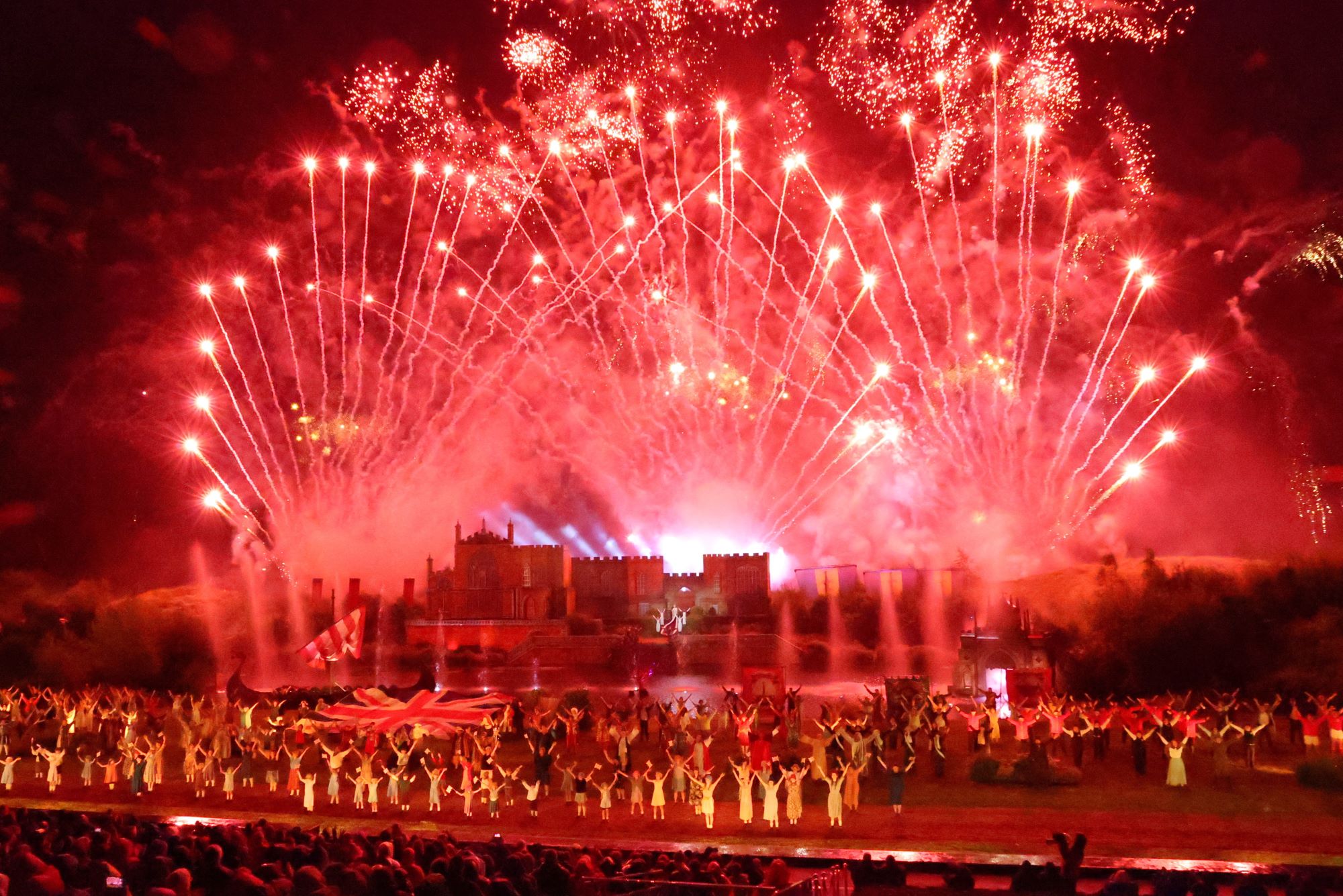Exhibit at Excursions™ – the original and longest-running domestic group travel show covering the UK…

Now open, new Echoes of the Blitz: Underground shelters in Ukraine and London photography exhibition at London Transport Museum
Images above: Echoes of the Blitz: Underground shelters in Ukraine and London exhibition. Visitors included Olga Sydorushkina from the Ukrainian Institute in London (bottom right image). Copyright London Transport Museum
- A new exhibition of 70 images has been created in partnership with n-ost, a Berlin-based journalistic network and London Transport Museum
-
- Contemporary photography of Ukrainian people sheltering in Metro stations and historical wartime images of Londoners taking refuge at Tube stations on display from today, Friday 01 March
- Visitors will see images documenting the important role transport infrastructure has played during wartime
- The resilience of people and the harsh realities of escaping aerial bombardment during times of war is captured in this display of images taken in the 1940s and today
A new photography exhibition: Echoes of the Blitz: Underground shelters in Ukraine and London opens today at London Transport Museum in Covent Garden.
The new photographic display explores how Underground stations and metro systems provide shelter to citizens during periods of war – now and in the past.
The exhibition features 70 striking images, including historical images from the Museum collection alongside 38 contemporary photographs by six renowned, mainly Ukrainian, documentary photographers.
In the UK, the dominant images of wartime air raids are of Londoners sheltering in Tube stations in the 1940s. But since February 2022 similar scenes have been repeated daily in Metro systems in Ukraine.
In this new display, visitors to London Transport Museum can see recent photography of ordinary Ukrainian citizens in extraordinary circumstances. They are shown sleeping, waiting, cooking, washing clothes, caring for their pets and creating temporary make-shift homes in Metro stations in the Ukrainian capital Kyiv and its second largest city Kharkiv. These scenes are ‘echoed’ in the black and white archive images of Londoners taking refuge in Tube stations during the Second World War.
Despite these images being taken around 80 years apart, they present strong parallels of human experience across different locations and conflicts. This exhibition documents the resilience of people in Ukraine and London during times of war and the reality of having to escape from aerial bombardment.

Left image London: people at base of escalators, Piccadilly Circus station, by Tunbridge & Sedgwick, September 1940. London Transport Museum collection. Right image Kyiv: people sitting on escalators at Teatralna station, by Viacheslav Ratynskyi, 26 January 2023 Copyright Viacheslav Ratynskyi, n-ost
Metro stations built as bomb shelters during the Cold War now protecting Ukrainians
London’s most concentrated period of bombing, and Tube sheltering, was between September 1940 and May 1941, known as the Blitz. The Underground was never intended to be used in this way, and the authorities initially struggled to cope.
In Ukraine, once part of the Soviet Union, most Metro stations were built during the Cold War (1947-91) to also function as bomb shelters in case of western attacks. Those same stations are now protecting Ukrainian civilians from Russian missiles.

Left image: London: people take shelter at Piccadilly Circus station, 1940. Copyright TfL from London Transport Museum collection. Right image: Kharkiv: woman takes shelter at Heroiv Pratsi station, by Serhii Korovayny, 21 May 2022. Copyright Serhii Korovayny, n-ost
Propaganda versus independent free media
The London photos come from the London Transport Museum collection, and would have been subject to government censorship when first produced. The current images from Ukraine were taken by independent, mainly Ukrainian, photojournalists.
At first, during the Second World War, the UK Government was opposed to letting people shelter in Tube stations as it believed keeping trains running was more important. However, following the sheer numbers of civilians heading below ground and protests from the press and Parliament, the authorities were forced to make a U-turn.
The work of press photographers was directed and, where necessary, censored to promote an image of Londoners united against the Blitz. This contrasts with the hard-hitting, realistic photo-journalism of the independent Ukrainian photographers that visitors will see today.
Maxim Dondyuk, a photographer featured in the exhibition, said: ‘I am not a war photographer, I never wanted to be and never will be. But this is my country and I feel obliged as a documentary photographer and as Ukrainian to capture this historic moment for the present and the future.’
Resilience and daily life underground
London’s air raid sirens sounded almost every day for eight months from September 1940 to May 1941 and again between June 1944 and March 1945. Sheltering in Tube stations overnight became a routine. There were special admission tickets, bunk beds on the platforms, refreshments and, at some stations, libraries, music and live entertainment.
In Kyiv, sheltering in the Metro peaked at around 40,000 people at the beginning of the Russian invasion in February 2022. Some stayed overnight, others for days or weeks, returning to the surface only for groceries or to wash. Those who lost their homes lived underground for months.
Kharkiv, close to the border with Russia, experiences more frequent shelling. People spent more time in the Metro there, creating comfortable homely spaces with bedding, tents, carpets, decorations and toys.
Quotes accompanying the photos from both 1940s London and present-day Ukraine tell the stories of daily life underground in both countries.
‘I hated it to be quite frank. The idea of going down night after night. Home – shelter – home – shelter.’ Len Phillips, London shelterer, 1941-45
‘At night, we went down to the Metro, and in the morning, we returned to the restaurant,
where we prepared breakfasts and lunches for people sheltering underground. We only
paused if we heard an explosion.’
Oleksandra __________, manager of voluntary kitchen and restaurant, Kyiv, 2023
Matt Brosnan, Head Curator, London Transport Museum, said: ‘The story of people sheltering in Tube stations during the Second World War has long been part of our Museum collection. So, when we were approached by n-ost with contemporary images that reflected the similar wartime experiences of civilians in stations in Ukraine, we felt compelled to produce an exhibition together. The images may be 80 years apart, but they show the resilience and tragic reality of war.’
Stefan Günther, Project Manager, Photo, n-ost, said: ‘The exhibition at London Transport Museum is, in addition to its historical value, an opportunity to perceive the current war in Ukraine on a very personal level, away from the wider political and media glare.’
Serhii Korovayny, a photographer featured in the exhibition, said: ‘I now believe even more in the power of photojournalism. Pictures are an important tool to show and make understandable the different experiences of this war, in Ukraine itself and abroad. I will continue to photograph this conflict until the Ukrainian victory, which I hope will soon become a reality.’
Viacheslav Ratynkyi, a photographer featured in the exhibition said: ‘On the first day of the Russian invasion on 24 February 2022 I went down into the Metro for the first time. As I listened to the air-raid siren, I decided to take shelter there and to bring a camera with me so I could document the situation.’
The exhibition will run until spring 2025. For more information visit Echoes of the Blitz: Underground shelters in Ukraine and London | London Transport Museum (ltmuseum.co.uk)
London Transport Museum would like to thank DCMS/Wolfson for their Museums and Galleries Improvement Fund grant which has helped create the new permanent Photography Gallery space which is currently displaying the new Echoes of the Blitz: Underground shelters in Ukraine and London.
Prior to collaborating with London Transport Museum, n-ost exhibited images of underground shelters from Ukraine on European subway stations in a project called Next Station Ukraine. Some of the photos from Next Station Ukraine will form part of this new display in London.
The photographers with work featured in Echoes of the Blitz: Underground shelters in Ukraine and London include:
Pavlo Dorohoi (Ukrainian) https://www.instagram.com/pavlodorohoi/ also featured in the Next Station Ukraine exhibition.
Viacheslav Ratynskyi (Ukrainian) https://www.viacheslavratynskyi.com also featured in the Next Station Ukraine exhibition.
Serhii Korovayny (Ukrainian) http://www.korovayny.com also featured in the Next Station Ukraine exhibition.
Maxim Dondyuk (Ukrainian) https://maximdondyuk.com also featured in the Next Station Ukraine exhibition.
Mykhaylo Palinchak (Ukrainian) https://palinchak.com.ua
Emile Ducke (German) https://emileducke.de also featured in the Next Station Ukraine exhibition.



